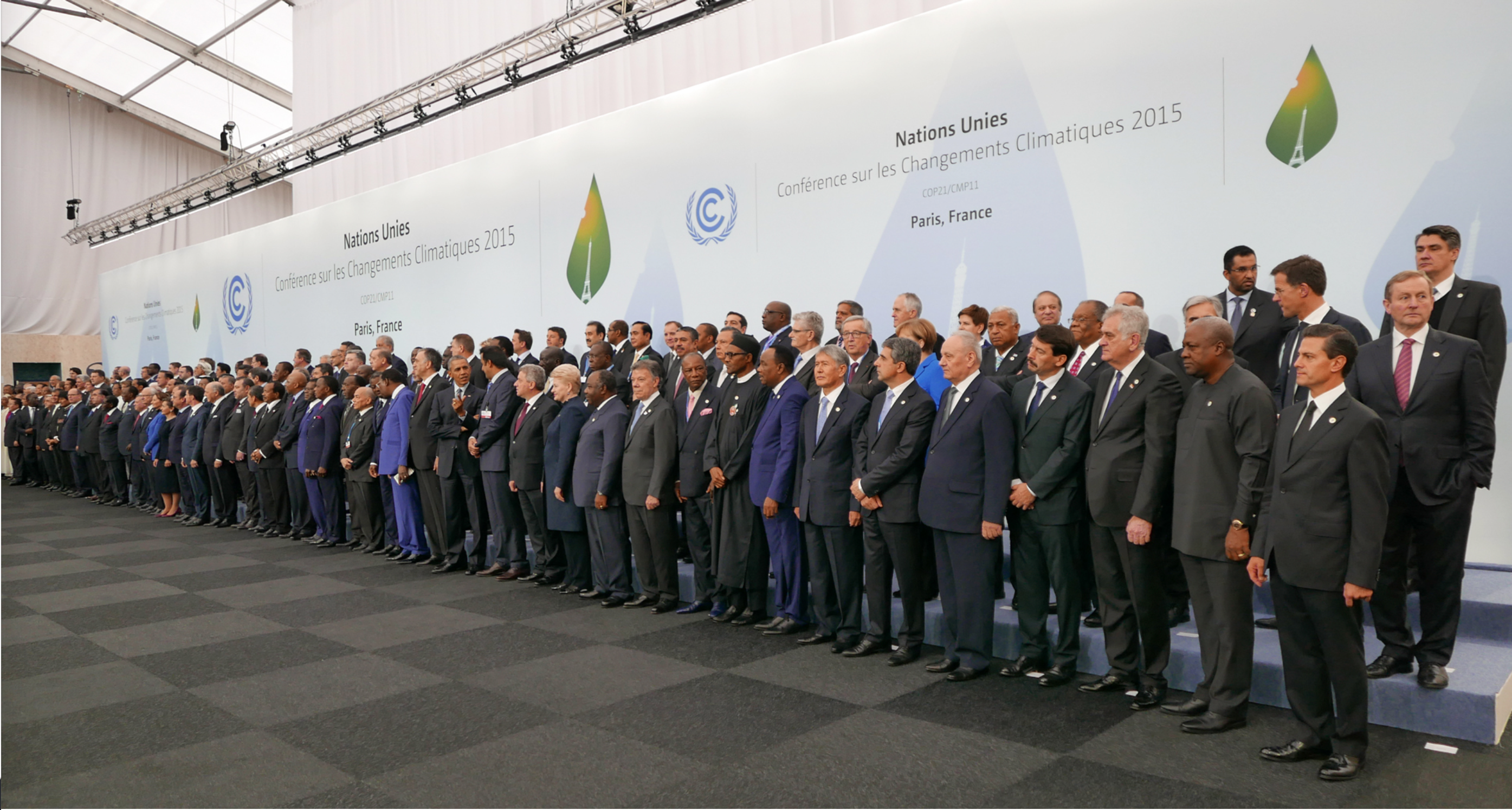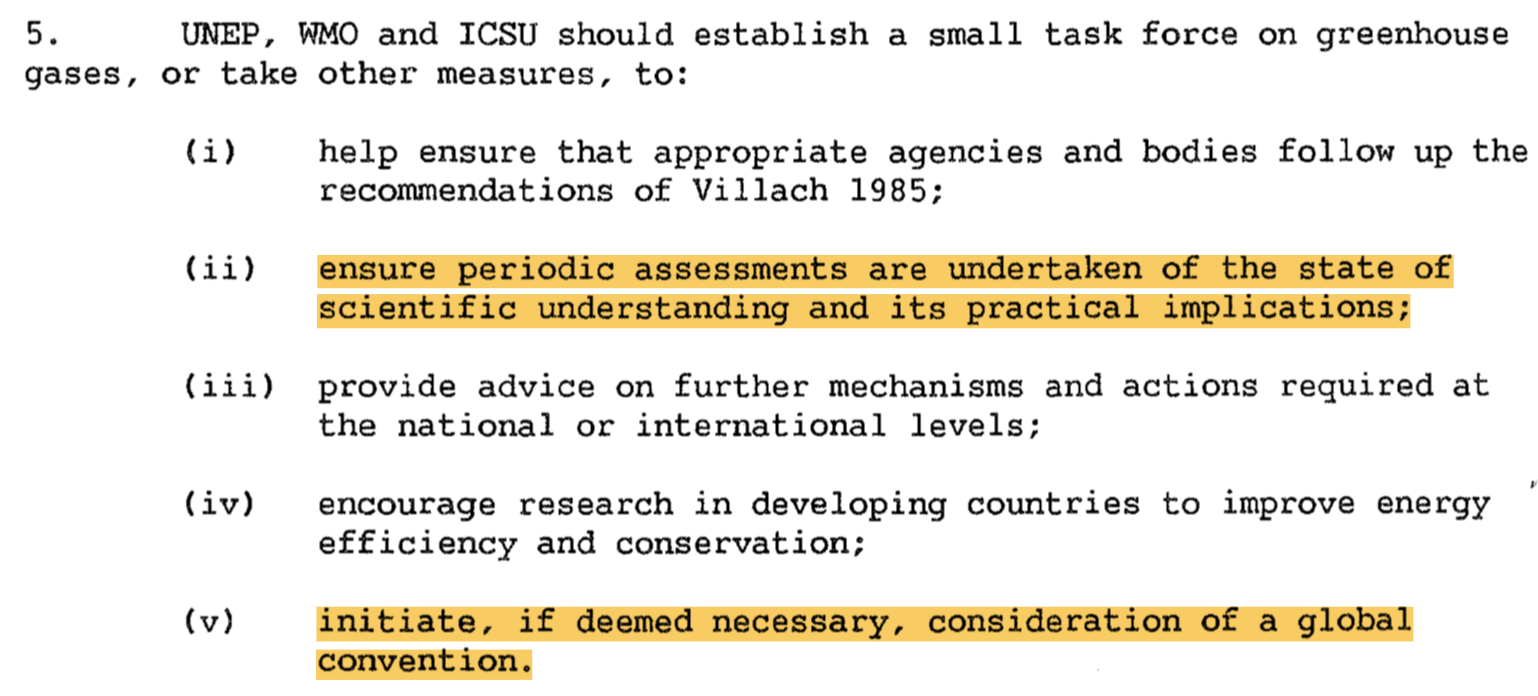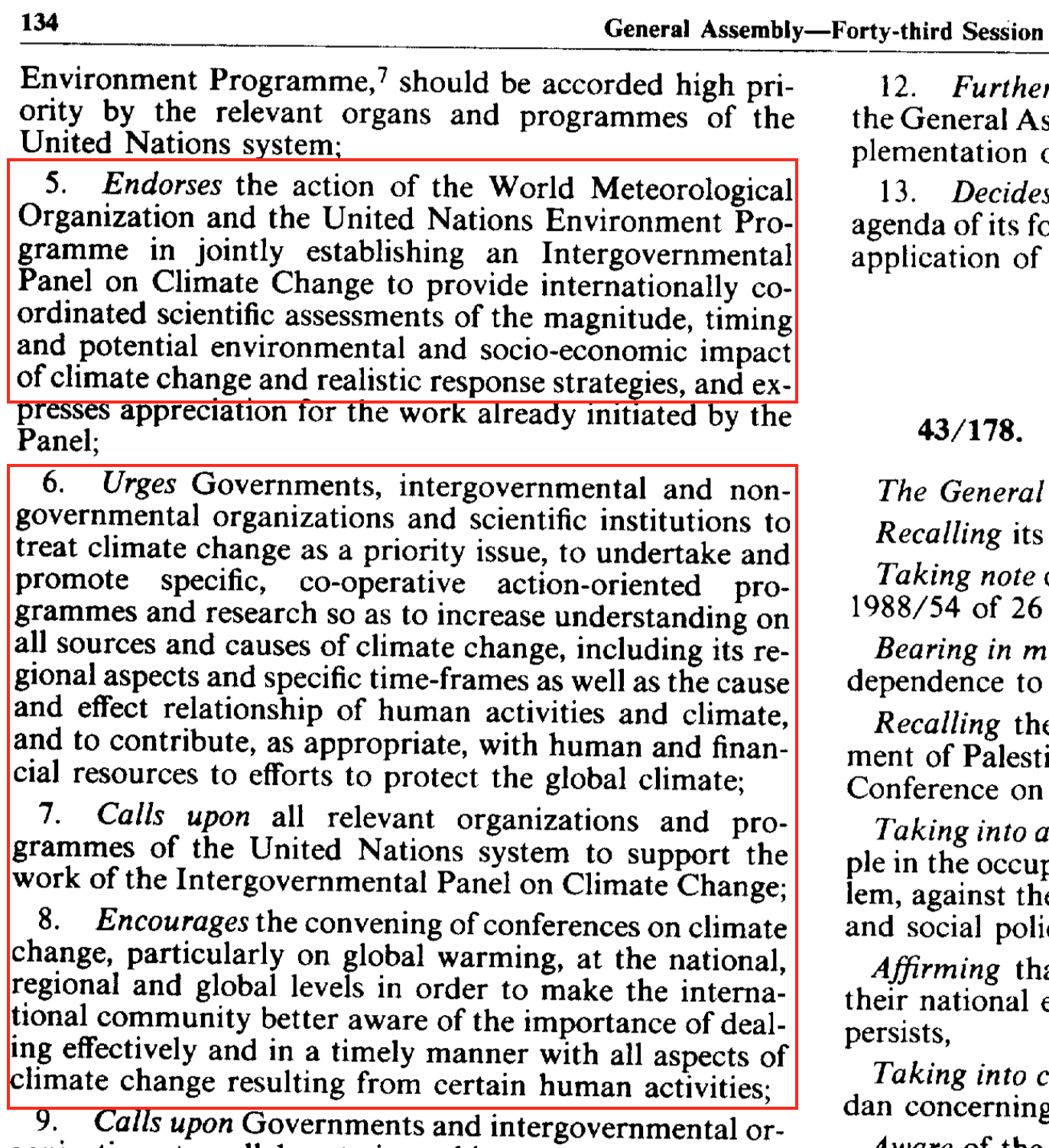
The United Nations Framework Convention on Climate Change (UNFCCC) is a treaty with the objective of: “stabilization of greenhouse gas concentrations in the atmosphere at a level that would prevent dangerous anthropogenic interference with the climate system.”4 This is informed by the Intergovernmental Panel on Climate Change (IPCC), within which “experts review and synthesize available scientific and technical knowledge.”5 The IPCC does not carry out its own scientific research, instead it informs the UN of existing relevant science. The following history of the UNFCCC’s formation explains how slow and ineffective the process has sadly been.
The first joint meeting of scientific bodies to assess CO2 in the atmosphere was held in 1980, between the United Nations Environment Programme (UNEP), International Council for Science (ICSU) and the World Meteorological Organisation (WMO).

At a 1985 meeting of the WMO, it was established that assessments be periodically undertaken of the state of scientific understanding of greenhouse gases and implications, and that a global convention to limit greenhouse gases be considered.

In 1988, the 43rd meeting of the UN General Assembly endorsed the formation of the Intergovernmental Panel on Climate Change (IPCC).

In mid-1992, 12 years after the first joint scientific meeting about CO2, the UN adopted for signature the Framework Convention on Climate Change. This was open for signature for two years before it “came into force” in mid-1994.8
Under this convention, the first annual meeting by signatory governments, named Conference Of Parties (COP1), was held in 1995, in Berlin.
It took until COP19 (nineteen annual meetings) just for an agreement to be reached to ‘work towards peaking emissions'9, with an agreement to limit emissions and global warming declared two further years later at COP211.
In 2020, 5 years since the Paris Agreement, 26 years since the UNFCCC came into force, 32 years since the formation of the IPCC, and 40 years since the first joint scientific meeting about atmospheric CO2, annual CO2 emissions from fossil fuels and industry have soared. These emissions have increased 90% since 1980, when the first joint scientific meeting about CO2 was held, and 57% since COP1 in 199510 11. To make matters worse: (i) limiting warming to 1.5˚C (the goal of the Paris Agreement) is not safe because when earth was last 1˚C±0.5˚C warmer than preindustrial (the Eemian), seas were 6 to 9m (20 to 30ft) higher12; (ii) the scale of emission reductions prescribed are beyond any historic precedent13; (iii) prescribed emission reductions depend on concurrent massive CO2 removal14; and (v) 1.5˚C is imminent15.
- https://en.wikipedia.org/wiki/2015_United_Nations_Climate_Change_Conference[↩][↩]
- https://en.wikipedia.org/wiki/Paris_Agreement[↩]
- https://en.wikipedia.org/wiki/2015_United_Nations_Climate_Change_Conference#/media/File:COP21_participants_-30_Nov_2015(23430273715).jpg[↩]
- p9 of The United Nations Framework Convention on Climate Change, http://unfccc.int/files/essential_background/background_publications_htmlpdf/application/pdf/conveng.pdf[↩]
- chap. 2. Evaluation of IPCC’s assessment process, http://www.interacademycouncil.net/File.aspx?id=27675[↩]
- WMO, 1986, Report of the International conference of the Assessment of the role of carbon dioxide and of other greenhouse gases in climate variations and associated impacts hosted at https://library.wmo.int/index.php?lvl=notice_display&id=6321[↩][↩]
- http://www.un.org/en/ga/search/view_doc.asp?symbol=A/RES/43/53 hosted at https://research.un.org/en/docs/ga/quick/regular/43[↩]
- https://unfccc.int/process/the-convention/what-is-the-convention/status-of-ratification-of-the-convention[↩]
- https://en.wikipedia.org/wiki/2013_United_Nations_Climate_Change_Conference[↩]
- CO2 emissions from fossil fuel combustion and cement: (i) in 1980 = 19.4GtCO2; (ii) in 1995 = 23.39GtCO2; and (iii) in 2019 = 36.8GtCO2. 2019 with respect to 1980 = 36.8/19.4 = +90%, and 2019 with respect to 1995 = 36.8/23.39 = +57%[↩]
- Global Carbon Project. (2019). Supplemental data of Global Carbon Budget 2019 (Version 1.0) [Data set]. Global Carbon Project, https://www.icos-cp.eu/GCP/2019, download labelled ‘2019 Global Budget v1.0’. Value for 2019 is projection shown in Global Carbon Budget, https://www.globalcarbonproject.org/carbonbudget/19/files/GCP_CarbonBudget_2019.pdf[↩]
- p.582 of https://esd.copernicus.org/articles/8/577/2017/esd-8-577-2017.pdf[↩]
- p.16, C.2.1, https://www.ipcc.ch/sr15/chapter/spm/[↩]
- chart 6, https://www.worldenergydata.org/1-5c/); (iv) the annual increase of CO2 emissions is near record rate((chart 7, https://www.worldenergydata.org/ghgs/[↩]
- https://www.theguardian.com/environment/planet-oz/2017/may/09/planet-could-breach-15c-warming-limit-within-10-years-but-be-aware-of-caveats[↩]